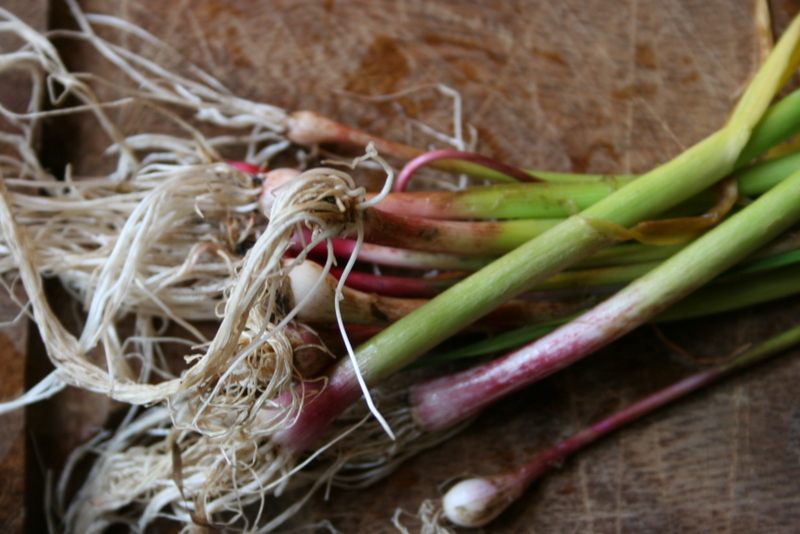The weirdest thing happened in my mom's back yard this year. Garlic revenge. You see, two autumns ago, my mom planted a whack of garlic in a raised bed. When it came up in the spring, it looked pretty sickly and unhappy. Mom ripped it out and went on with other things, but she didn't get around to planting anything else in that bed. Fast forward to this spring, and guess what? The garlic came back! Multiplied by ten! Aaaaagh! Before the garlic attack, I had planned to use that bed for some other veggies (I've taken over the vegetable beds over there, and I'm calling it a yardshare, because that sounds a bit more sophisticated than "Mom's house"). Given the unexpected garlic population, I decided to shift things around and interplant the established garlic with carrots and beets. Carrots and alliums (that is, onion-family plants) are often planted together because they're supposed to deter one another's insect enemies, and the beets just seemed like they wanted to go along for the ride. So I pulled out the more spindly-looking of the garlic stems in order to make semi-straight rows, then put my seeds down in the new spaces.
What I was left with was a heap of skinny, delicious-smelling immature garlic. Was I about to chuck it in the compost heap? Heck no! I took it home, gave it a scrub, and ate it!
This handful went into some delicious risotto. I make risotto a lot to use up bits and pieces of local veggies, especially things from my garden that aren't quite plentiful enough to make a full side-dish. Jamie Oliver's basic recipe is a good place to start: you can just add in whatever vegetables you have on hand.
There are so many vegetables that can be enjoyed in their immature form. Pea shoots are delicious if you find you've placed your peas too close together in the garden and need to get rid of some. Beets, chard, and spinach generally need to be thinned once they sprout, and those thinnings are delicious in a salad or on a sandwich. Any member of the cabbage family - Brussels sprouts, kohlrabi, broccoli, whatever - can be eaten at any stage. Brussels sprouts actually benefit from having their growing tips pinched out and lower leaves removed as the season progresses, and those are absolutely delicious steamed or stir-fried. Young radish and turnip leaves are delicious. Broad beans (fava beans) have tasty leaves at their growing tips that can be steamed and eaten like spinach; like Brussels sprouts, they benefit from having their growing tips removed when the plants are a few feet tall, so that the energy goes into producing more beans rather than growing into towering bean forests. And, of course, salad greens and herbs can be eaten as microgreens as soon as they emerge, if you like.
Since I tend to be pretty heavy-handed with my seed sowing (I just never believe that they're all going to come up, and then I freak out when they do), I eat a lot of baby greens. Thinning out your garden beds seems like much less of a hassle when you know consider it a mini-harvest.
(A note: While most vegetables have edible leaves, members of the nightshade family - potatoes, tomatoes, eggplants, peppers, etc - should not be eaten in leaf form. They're a little bit toxic. They're not very tasty, either, so you're not missing much. I don't know if the leaves of cucurbits - squash, zucchini, melons, cucumbers - are toxic, but they're tough and generally hairy, so give them a miss, too.)








